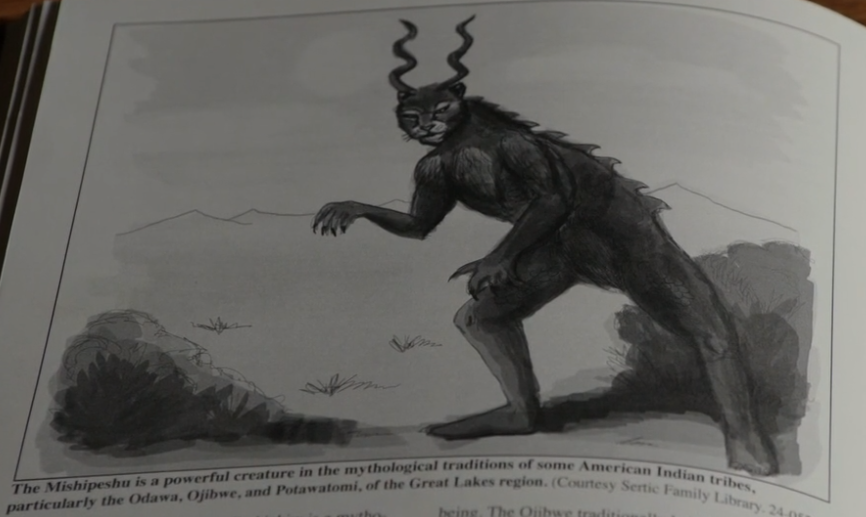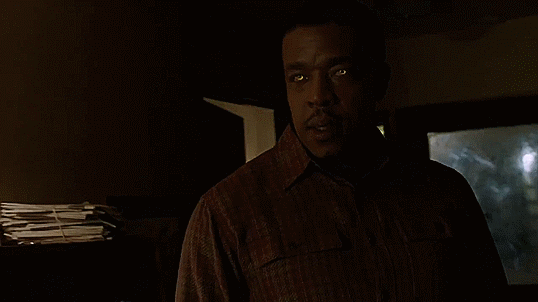'Grimm' fan recap: The legend of the Mishipeshu
By TeamTSD
NBC’s Grimm borrowed from real Native American mythology this week and tackled the legend of a well-known water being, the Mishipeshu.
Wesen of the week.
The Mishipeshu is a real legend among Great Lakes and Northeastern Woodlands Native American tribes, notably linked to the Ojibwa. It’s also referred to as an “Underwater Panther,” and Mishipeshu directly translates to “The Great Lynx.” In Native American mythology, the Mishipeshu is a serpent-feline mix with cat-like paws, scales all over its body, horns, and spikes on its tail. Descriptions of its size and appearance vary, and some even say the tail or horns are made of copper.
Our Grimm case of the week begins when a school janitor is found mauled to death. When Nick, Hank, and Wu question the principal, they find out that the janitor was most likely to blame for scrawling racial slurs on a former Native American student’s locker. The student was Simon George, who we learn watched his father be beaten to death when he was five years old. Hank and Janelle head to the reservation to find Simon, but are informed by a man named Hector that he’s currently on a power quest. What does this mean exactly? It means Simon was dropped off alone on a mountain to find his guardian spirit (an animal) and he’ll stay there for days probably starving, scared, and lost. No, this spirit quest is not the same as your two-day Daredevil marathon accompanied by agonizing internal conflicts over what to feed yourself (not that we’d know what that’s like.)
When another person is murdered at a car-repair shop, and another man is nearly killed in his home before Nick & Co. save him, the gang realize these three men all knew each other well. They also realize that Simon is being possessed by the Mishipeshu and is looking for revenge.
Vision Quest.
At the reservation, Hank, Janelle, and Nick are told by Hector that in order to find Simon, they need to enter the “dream world” and view Simon’s past. Hank drinks a mystery liquid (kids, don’t try this at home) and starts sweating and having visions.
In the vision, he is Simon, and he watches his father get beaten to death. Surprise! The men who killed Simon’s father are the three victims that the Mishipeshu mauled (although one is still alive). Meanwhile, Janelle gets too high and is kicked out of the wigwam. Bye, Janelle!
Hank, still linked to Simon, starts running through the woods toward the father’s burial spot. Unfortunately for Hank, he runs across Simon and the Mishipeshu decides to possess Hank instead. Body swap! The Mishipeshu wants to finish what he started and kill the third man. Nick, Simon, Hector, and Janelle reach Hank in time to keep him from killing the guy and expel the Mishipeshu from him. Everyone knows that this douchebag killed Simon’s father, but without evidence, they can’t arrest him. It’s totally fine though, because later that night, Janelle (voluntarily?) gets possessed by the Mishipeshu and kills the last murderer herself. Case closed.

Rob's review
Mishipeshu is another mixed episode of a network TV show. These days you can almost bet on "mixed," "average," or "mediocre" being the verdict. TV shows are rarely exceptionally good or bad where Natives are concerned. Mediocrity rules.
Let's review:
But the episode has to stretch for an explanation of why the Mishipeshu is in the Northwest: because it came with Simon's Ojibwe mother. It left its underwater home and traveled across half a continent...well, because.

In fact, a quick search doesn't show anything about underwater panthers leaving the water, traveling long distances, or possessing humans. Other than getting its origin right, Grimm turns the Mishipeshu into a typical death-dealing demon.
Alas, I don't think Pacific Northwest tribes practice vision quests. The made-up terms don't justify the pan-Indian stereotyping.
It comes across as pure rubbish. For starters, a tribal practitioner in Oregon wouldn't know anything about contacting a Great Lakes spirit. It would be like a Celt contacting a Greek god or a Greek contacting a Celtic god...ridiculous.
And no way would Hector enlist two non-Natives to enter the dreamworld and seek the Mishipeshu. Like brain surgery or an exorcism, this isn't something done by amateurs. A medicine man or "shaman" would do it only by himself, after years of training.
So the look and feel of the tribe is decent. The use of real Native mythology--and not the overused wendigo--is decent. But the Mishipeshu's spree of possessing and killing people, and the phony ceremony to stop it, are stereotypical. The special effects are nice, but they're not enough to save the story.


No comments:
Post a Comment